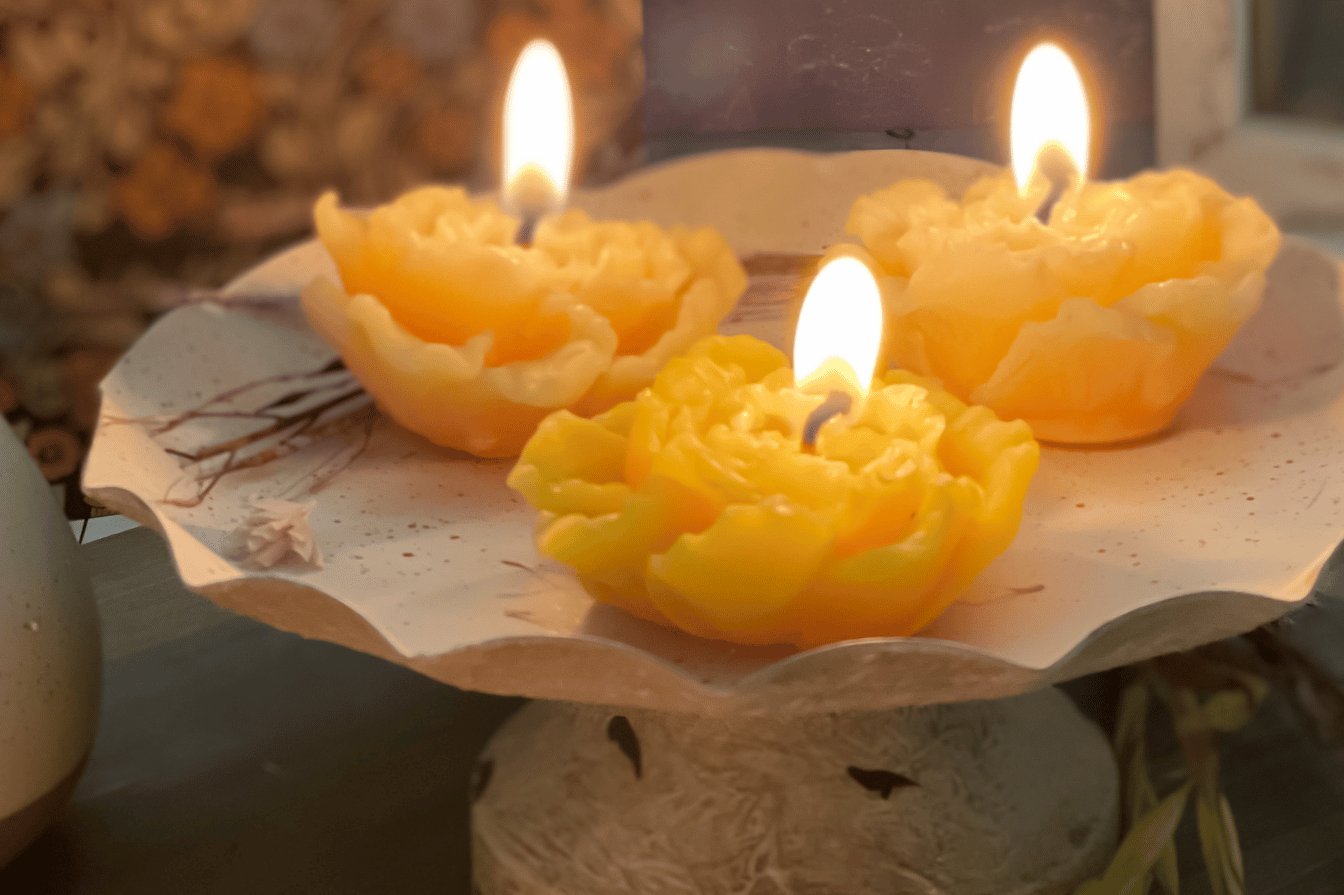From Comb to Candle: The Craftsmanship Behind Beeswax Candles

Beeswax candles have been around for centuries and have been valued for their clean, natural scent and long burn times. Made from the wax produced by honeybees, beeswax candles produced through sustainable practices, are popular for their eco-friendliness, and as a natural alternative to paraffin wax candles, which are derived from petroleum or soy wax which requires heavy chemical processing. In this article, we will explore what goes into making your beeswax candle.
What is Beeswax?
Beeswax is a natural substance produced by honeybees. It is created in the worker bees’ wax glands and used to build the hexagonal cells in the honeycomb, which is used to store honey and raise their young. Beeswax is a complex mixture of fatty acids, esters, and hydrocarbons, and its composition varies depending on the plant species the bees visit.
Collecting Beeswax
Collecting beeswax involves harvesting it from the honeycomb. The wax I collect is the cappings from the honey supers I extract throughout the season, and from any frames in my hives that need to be culled. Beekeepers cull (remove and replace) frames that have been in the hive for 3 years or more. They then add brand-new frames for the bees to work on. The wax cappings are strained for 24 hours, allowing any excess honey to drip into a honey pail. Next, it gets melted down and strained to remove any impurities such as pollen, or debris.
The strained and melted wax is then allowed to cool into blocks until it is ready to be used. Beeswax from different regions may also vary in color, scent, and texture. The purity of beeswax used in candles can vary. Some people blend beeswax with other waxes or additives, however, my candles are made with 100% pure beeswax. The only exceptions are my cocktail candle collection and the jar candles where essential or fragrance oils are used.
Selecting a Wick for Beeswax Candles
The wick is a crucial component of any candle, and choosing the right one is important. The wick must be able to draw the melted wax up to the flame to keep the candle burning. For my beeswax candles, only cotton wicks are used. The wick’s size is also essential as it determines the candle’s burn rate. A wick that is too small will not draw up enough wax, causing the candle to burn unevenly, while a wick that is too large will burn the wax too quickly, causing the candle to burn out faster. The diameter of the candle goes into determining the wax size.
Preparing the Wax For Beeswax Candles
Before the wax is poured into the mold, it needs to be prepared. The wax must be melted and cleaned of any impurities. Beeswax has a high melting point of around 145°F (63°C), so my wax is melted using a dedicated wax melter. Once melted, the wax can be further refined to achieve a particular color or scent. This is done by filtering the wax or adding essential oils, fragrance oils, or colorants.
Pouring the Beeswax Candles
The wax has been melted and prepared, it is time to pour it into the molds. Beeswax can be poured into a variety of molds, including jars, tins, or shaped molds. The mold should be clean and free of any debris to ensure a smooth finish. The wick is then attached to a metal or wooden wick bar, which is used to center the wick in the mold. The wax is then poured into the mold, taking care not to overfill it. As the wax cools, it will contract, leaving a small well in the center. This is called a sinkhole, and it is filled by pouring a small amount of melted wax into the center of the candle.
Not all molds are made the same, some of the molded candles I make that feature intricate details have a lower success rate and typically need to be poured a couple of times. They also need a mold-release spray to be applied prior to pouring.
Some actually take multiple pours such as the candles in the Cocktail Candle Collection. First, the “toppers” are poured, and the glasses need to have a sealing pour before everything can be combined into the finished candle.
Finishing the Beeswax Candle
Once the wax has cooled and solidified, the candle is removed from the mold and the wick is then trimmed to the optimal length, typically around ¼ inch.
The Craftmanship of Beeswax Candles
The high melting point and density of beeswax also means that the candles burn for a longer period, giving them a longer burn time than paraffin or soy wax candles. The natural color of beeswax varies from creamy white to golden yellow, making them an attractive addition to any home.
The Craftsmanship Behind Beeswax Candles is a fascinating process that involves collecting and refining beeswax, choosing the right wick, and pouring and finishing the wax. Beeswax candles with their clean burn and natural scent, are sure to add warmth and charm to any home.
Check out our Ultimate guide on how to care for and get the most out of your beeswax candles, ‘The Ultimate Guide to Caring for Beeswax Candles: Tips and Tricks for a Perfect Burn‘.
Shop our Hand-poured Beeswax Candles Shop our Hand-rolled Beeswax Candles
Save 20% off of your beeswax candles with discount code: BEESWAX20
Ordering outside of Canada? Visit my Etsy Shop
About The Author
wilding.stephanie
Related Posts
Witchcraft, Spirits, and Phantom Shadows: The Haunting Lore of Beeswax Candles
Discover the spooky history and haunting lore of beeswax candles, from witchcraft and spirit summoning…
October 1, 2024The Ultimate Guide to Caring for Beeswax Candles: Tips and Tricks for a Perfect Burn
The Ultimate Guide to Caring for Beeswax Candles: Tips and Tricks for a Perfect Burn…
March 9, 20231 COMMENT
Leave A Comment
Error: API requests are being delayed for this account. New posts will not be retrieved.
There may be an issue with the Instagram access token that you are using. Your server might also be unable to connect to Instagram at this time.





The Ultimate Guide to Caring for Beeswax Candles: Tips and Tricks for a Perfect Burn | 19th Mar 23
[…] Check out the craftsmanship that goes into each candle, in my new blog post: From Comb to Candle: The Craftsmanship Behind Beeswax Candles […]